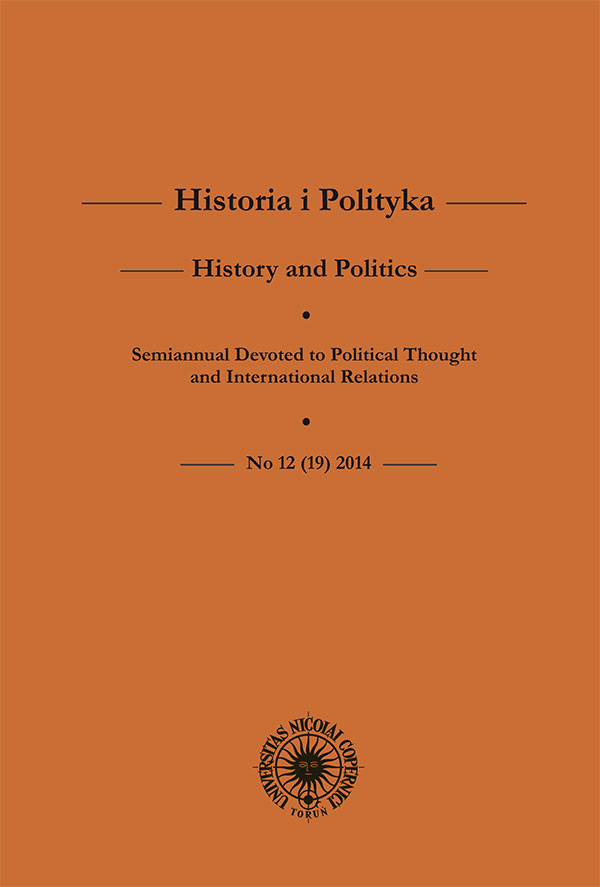Structural and Functional Bases of Formational, Institutional and Procedural Mechanism Using Power Resources of Stalin’s Totalitarian Regime in Western Ukraine at the Final Stage of the Second World War
Structural and Functional Bases of Formational, Institutional and Procedural Mechanism Using Power Resources of Stalin’s Totalitarian Regime in Western Ukraine at the Final Stage of the Second World War
Author(s): Oksana Yuriivna DokashSubject(s): Government/Political systems, Studies in violence and power, WW II and following years (1940 - 1949)
Published by: Wydawnictwo Naukowe Uniwersytetu Mikołaja Kopernika
Keywords: Western Ukraine; World War II; Stalin’s regime; repressive and punitive organs; political violence;
Summary/Abstract: The presented scientific, theoretical and practical aspects of the topic are considered an important prerequisite for understanding the causes and results of the mass use of the deportation repressive tool in the intensive consolidation of Stalin’s totalitarian regime in “class hostile environment” and the consequences of such a policy for the western region development, particularly at modern stage, including the Ukrainian political nation-building and the independent Ukrainian state, which is now experiencing challenges and threats that are rooted in the totalitarian past. Stalinism, as a particular political regime, was established in the western regions of Ukraine at the final stages of World War II and can be defined as a kind of left extremist totalitarianism. The main components of the efficiency of the Stalinist totalitarian regime based on the mass use of political violence and terror through the branched structure of repressive secret police. Functions of the NKVS, NKVD, prosecutors, and courts followed the strategic objectives of Stalin’s totalitarian regime in a hostile social and national environment in Western Ukraine in the complex military and political conditions of the final phase of World War II. Effective and timely implementation of policy priorities of Stalinism in the region allowed to create an appropriate institutional and procedural system, which was based on the large-scale use of political violence and employed such characteristic tools as terror, repression, deportation.
Journal: Historia i Polityka
- Issue Year: 19/2014
- Issue No: 12
- Page Range: 23-32
- Page Count: 10
- Language: English

